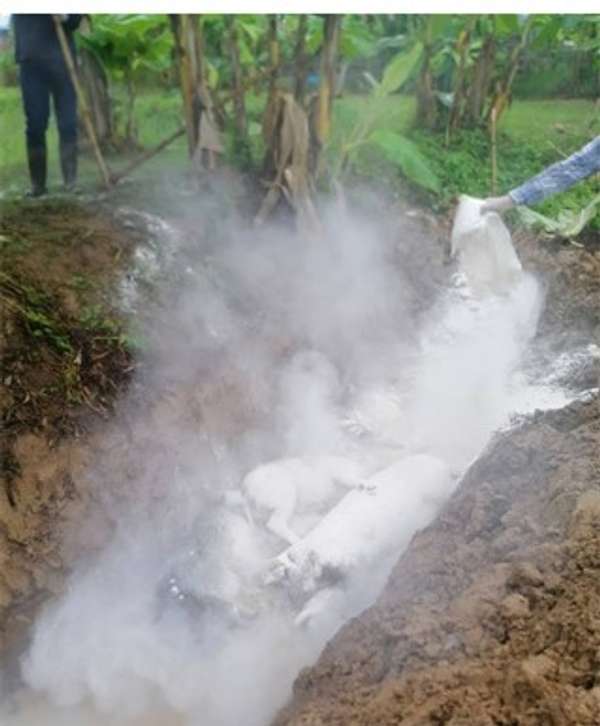 Isolate any pigs showing symptoms. Prevent cross-contamination to remaining pigs through tools, boots, feed, and other sources by disinfecting necessary items. It is important that your farm does not become the center of a wider outbreak.
Isolate any pigs showing symptoms. Prevent cross-contamination to remaining pigs through tools, boots, feed, and other sources by disinfecting necessary items. It is important that your farm does not become the center of a wider outbreak.- Immediately alert local animal health officials. Though this may bring potential scrutiny to the farm, it is better to report suspected ASFV than to be caught covering it up. Local animal health officials will also have up-to-date information for effective control and decontamination.
- Follow recommendations of local animal health officials after testing and confirming infection of ASFV – this will likely include the mandatory culling of all pigs on site and a moratorium period (up to one year) before new pigs can be reintroduced to the premises.
- Following recommendations of local animal health officials, carcasses of pigs should either be burned or buried with lime to prevent spread of infected materials.
- The entire premises, in and around pig production areas of the farm, need to be properly disinfected with appropriate disinfectant material. As a “DNA enveloped” virus, ASFV can survive long periods of time on site (up to one year). See Disinfectants for Use Against ASFV resource for more information.
- Any materials that cannot be adequately cleaned or disinfected should be burned or buried with lime, such as bedding material and manure waste.
- Only after following all recommendations of local animal health officials, and subsequent approval, should attempts be made to repopulate the farm with new pigs.
- Once pigs have been reintroduced, a Farm Biosecurity Plan should be strictly adhered to so that a repeat outbreak is prevented.